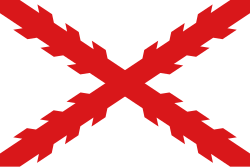History
Spain was the first European state to colonize the Florida peninsula, expanding northward from Cuba and establishing long-lasting settlements at St. Augustine, on the Atlantic coast, as well as at Pensacola and San Marcos (St. Marks), on the Gulf of Mexico coast. [1]
Map showing piecemeal reduction of Spanish control in West Florida
[2] p 2Annotated map of the territorial changes of Spanish West Florida
[3] Under Spanish rule, Florida was divided by the natural separation of the
Suwannee River into West Florida and East Florida (map:
Carey &
Lea, 1822).
Following Spain's losses to Great Britain during the Seven Years' War, Spain ceded its Florida territory to Britain in 1763. British administrators then divided the territory into two colonies: East Florida, including the Florida peninsula with the capital at St. Augustine, and West Florida, to which was appended part of the territory received from France under the 1763 peace treaty. West Florida extended from the Apalachicola River to the Mississippi River, with its capital at Pensacola. [4]
In 1779, Spain entered the American Revolutionary War on the side of France but not the Thirteen Colonies. [5] Bernardo de Gálvez, governor of Spanish Louisiana, led a military campaign along the Gulf coast, capturing Baton Rouge and Natchez from the British in 1779, Mobile in 1780, and Pensacola in 1781.
In the 1783 Paris peace treaty, Great Britain returned both Florida colonies to Spanish control. Instead of administering Florida as a single province, as it had before 1763, New Spain preserved the British arrangement of dividing the territory between East and West Florida (Florida Oriental and Florida Occidental). [6] When Spain acquired West Florida in 1783, the eastern British boundary was the Apalachicola River, but Spain moved it eastward to the Suwannee River in 1785. [7] [8] The purpose was to transfer San Marcos and the district of Apalachee from East Florida to West Florida. [9] [10]
Population and demographics
When British West Florida surrendered to the Spanish, civilian residents of Pensacola were given the option of staying or leaving, with most opting to leave. Pensacola primarily functioned as a British military garrison and most of its inhabitants were directly or indirectly involved with the garrison. At the time of the transfer of West Florida to the Spanish from the British the population of Pensacola excluding its military garrison was about 300. The population of Pensacola would grow, with the civilian population in 1788 being 265 and increasing to 572 by 1791. However, when Spain went to war in April of 1793 some residents left, reducing the population to 400. With the loss of Spanish Louisiana, the population grew further to 1,000 by 1810 and peaked in a census taken on June 13, 1813 at 3,063 people. [11]
Between where Pensacola ended and the American settlements began, control of the land was left to several Native American tribes: the Cherokee, the Chickasaw, the Choctaw and the Creek, which altogether had a population of 45,000. [11]
With the arrival of the Spanish in West Florida, they did not revive the mission system they had left behind when the British gained control of Florida in 1763. The Spanish adopted a policy that allowed for religious freedom among those who lived there, but did not permit them to practice any faith other than Roman Catholicism in public. [12]
The Spanish aided the migration of the French Acadians to the colony's Louisiana bayous by subsidizing their "transportation, maintenance, and financial aid" between 1783 and 1785 and their migration to Louisiana resulted in the Cajun culture forming. [12]
This page is based on this
Wikipedia article Text is available under the
CC BY-SA 4.0 license; additional terms may apply.
Images, videos and audio are available under their respective licenses.




